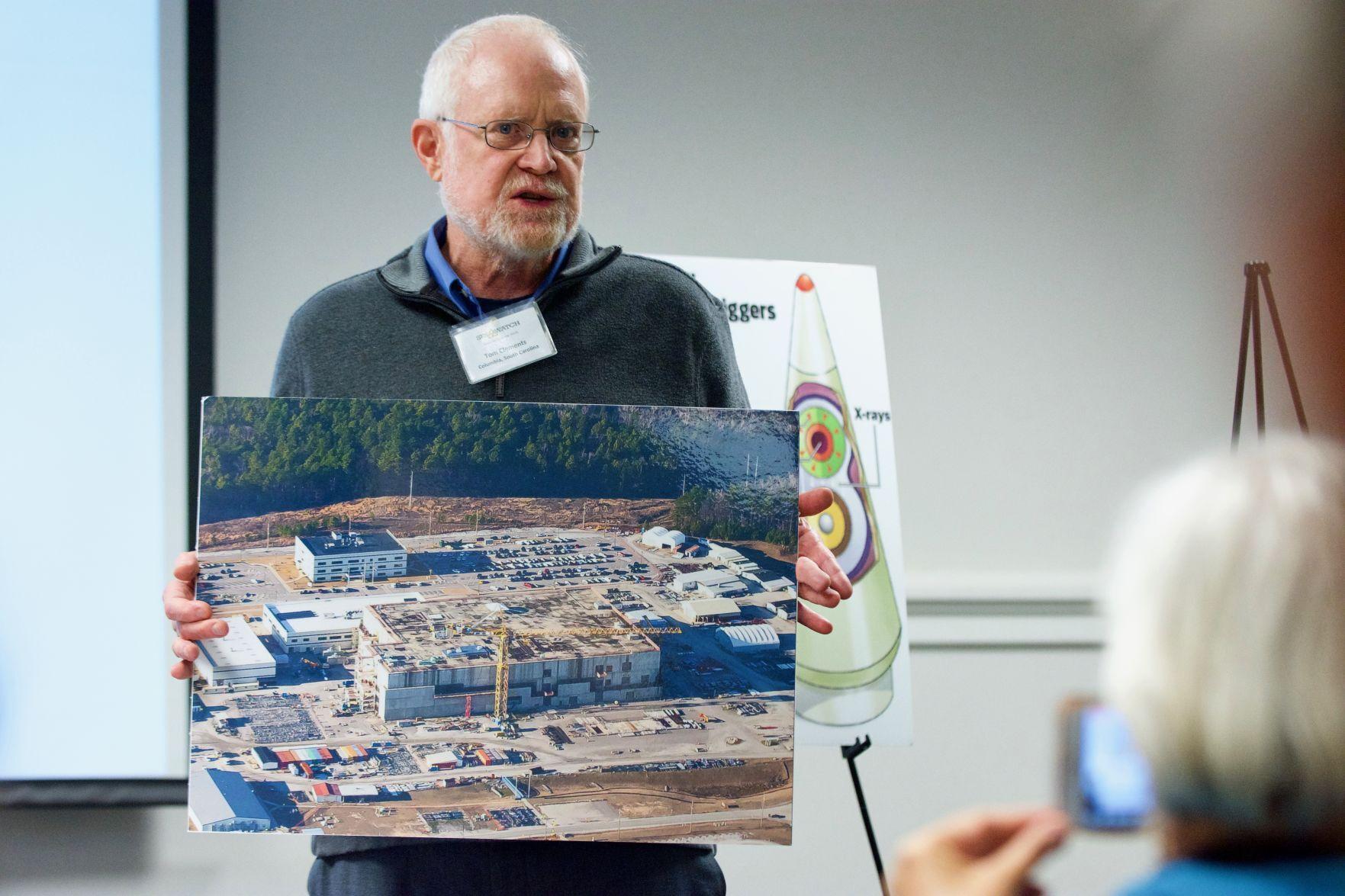Savannah River Site Watch, Nuclear Watch New Mexico and Tri-Valley CAREs, represented by the the S.C. Environmental Law Project, in early February sent a letter and supporting documents to the Department of Energy and its National Nuclear Security Administration outlining grave concerns and allegations of cut corners.

Staff photo by Colin Demarest
A coalition of nuclear watchers and nonprofits is again lobbying the federal government to conduct a more rigorous environmental review of plans to produce nuclear weapon cores in South Carolina and New Mexico, this time hoping the new administration is more amenable.
Savannah River Site Watch, Nuclear Watch New Mexico and Tri-Valley CAREs, represented by the the S.C. Environmental Law Project, in early February sent a letter and supporting documents to the Department of Energy and its National Nuclear Security Administration outlining grave concerns and allegations of cut corners.
The watchdog trio has for years pushed back against expanded plutonium pit production, generally casting it as warmongering, and expensive at that.
“We are providing you with a consolidated package of the previously submitted documents to ensure that this new administration is immediately aware of the serious environmental and human health risks associated with a significant expansion in pit production, and has immediate access to these documents,” attorney Leslie Lenhardt wrote Feb. 10.
The group is seeking a programmatic review of the department’s 2018 plutonium pit production proposal – a comprehensive, cumulative analysis of the cross-country endeavor’s environmental repercussions. A lesser, fragmented approach, Tri-Valley CAREs Executive Director Marylia Kelley said, can obscure risks and costs.
The fact that an attorney is involved suggests the watchdogs are willing to sue. While hopes are high the Biden team listens, SRS Watch Director Tom Clements said in a statement, legal action remains an option.
“Our clients, in seeking to reach a solution that avoids a lawsuit under NEPA, welcome the opportunity to discuss this matter further, and request that you keep us apprised of the agencies’ direction on this issue,” Lenhardt similarly stated in her letter, using shorthand for the National Environmental Policy Act.
Federal law mandates the production of 80 pits per year by 2030 – a significant challenge, as the U.S. has for awhile lacked the means to craft the key warhead components in great quantity. (The last place to produce pits en masse, the Rocky Flats Plant in Colorado, was scuttled following an investigation and raid.)
To satisfy the demand for pits – suspect in the first place, groups have argued – the National Nuclear Security Administration and the Department of Defense in May 2018 recommended establishing and turbocharging production at two complexes across two states: the Savannah River Site, south of Aiken, and Los Alamos National Lab, near Albuquerque and Santa Fe, New Mexico.
At SRS, the never-finished Mixed Oxide Fuel Fabrication Facility would be mothballed and repurposed, the NNSA and Defense Department counseled. At Los Alamos, PF-4, a plutonium facility, would be expanded upon and upgraded. Billions of dollars would be spent.
A two-pronged approach, SRS Watch and its companions argue, is a radical departure from what has been studied before, mandating additional evaluation.
“Whatever they decide,” Kelley said, “a project is always safer, less expensive, more efficient and better if you look at all the risks up front.”
Both Secretary of Defense Lloyd Austin and his deputy, Kathleen Hicks, have promised a wide-ranging review of the U.S. nuclear modernization portfolio, though that evaluation is more aimed at spending and efficiencies. Austin did not explicitly back the two-state pit production solution when asked by the Senate Armed Services Committee.
